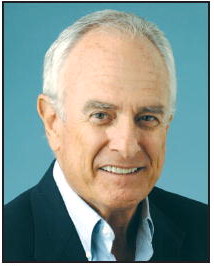Jimmy Orr


With Jimmy Orr, life was to be enjoyed, and what better way to enjoy it than the way he did. He worked hard at his job as a wide receiver for the Pittsburgh Steelers and Baltimore Colts, but he never considered it work. At the peak of his career, Orr was the best flanker in the National Football League, retiring after 13 years with a Super Bowl ring. One of the most accomplished receivers in the NFL in the glory days of John Unitas, Orr was an unselfish player, who was admired and adored by his teammates. He wasn’t big, 5-11, 185 pounds, he wasn’t fast—the tight end John Mackey could outrun Jimmy for 40 yards. Orr ran an :04.8 forty, which made most players a candidate for that unwelcomed news: “Go see the General Manager. And, by the way, take your playbook.” That meant you were being cut from the squad. Jimmy Orr was never told to meet with the G. M.
Even at 36, in 1970, the Colts invited him back to training camp, which caused Orr to quip. “I don’t know why they thought I could play again. Hell, I couldn’t play last year.” But when he could play, there was none better.
He caught touchdown passes from two quarterback legends, Bobby Lane, when Orr was NFL rookie-of-the-year with the Steelers in 1958, and John Unitas with the Colts. Orr could keep up with Bobby Lane on and off the field. Lane was famous for staying out all night and then bringing the Steelers from behind to win a game on Sunday afternoon. Although their time as teammates was brief, Orr and Lane surely share the record for most wins when hungover.
When he died at his home in Brunswick last week, the Internet was overflowing with tributes. Ask Google to share what is there and you will conclude that Orr was a remarkable talent. What I was always impressed about him was that when he was the biggest of stars in his prime at Baltimore was that his hat size never changed. He was a modest player, totally devoid of self-serving bent.
When he was 11-yearsold, Jimmy’s physician father, whose practice was in Seneca, S. C., brought Jimmy to Athens to see Charley Trippi play in 1946. He was emotionally attracted to the Georgia uniform and the fact that Wallace Butts had a propensity for underscoring the passing game.
When he finished high school, Orr, an outstanding basketball player, received scholarship aid to play at Wake Forest. He became unhappy and decided to walk on at Georgia and play football. Before long, he was put on scholarship. The timing was good for him personally, but not for the teams he played on. Georgia did not experience a winning season while Orr was in Athens, winning only 10 games while he was on campus. However, Jimmy led the SEC in pass receiving twice and helped move Georgia Tech’s defensive line backwards as Theron Sapp scored the touchdown to break-the– drought in 1957.
Before he retired, I visited Orr a couple of times at the Colt training camp in Westminster, Maryland. He introduced me to his Colt buddies, including Unitas. Spending








